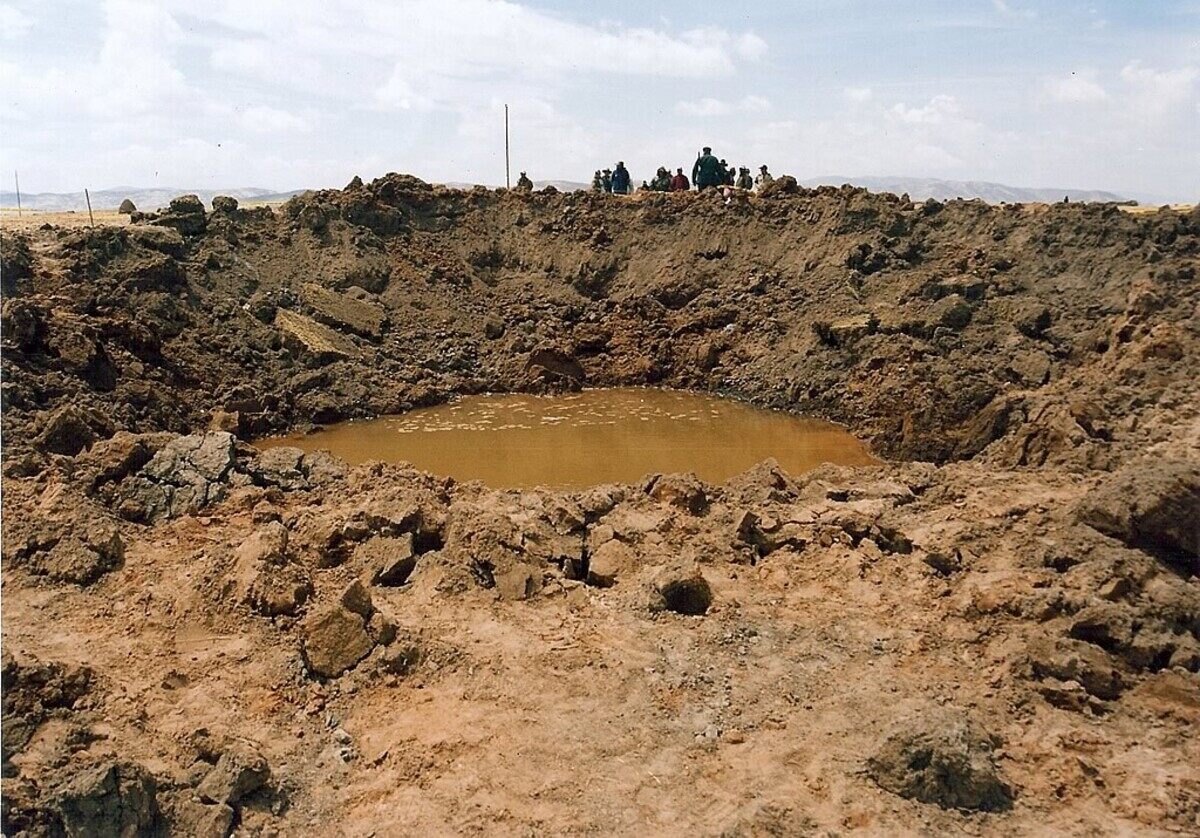
Did you know that a meteorite crash in Peru caused a mysterious illness? The Carancas meteorite struck near Lake Titicaca in 2007, creating a crater and sparking a strange series of events. Villagers reported headaches, nausea, and skin irritations after the impact. Scientists scrambled to understand the cause, debating whether the symptoms were due to toxic gases, contaminated water, or psychological effects. This incident remains one of the most intriguing meteorite impacts in recent history. Let's dive into 34 fascinating facts about the Carancas meteorite and the puzzling sickness that followed its dramatic arrival.
Key Takeaways:
- The Carancas meteorite impact in Peru caused mysterious illnesses due to toxic gases, highlighting the need for quick response, health assessments, and public education in similar events.
- Ongoing research on the Carancas meteorite aims to understand its health effects, composition, and environmental impact, leading to new technologies for better detection and analysis.
What is the Carancas Meteorite?
The Carancas meteorite struck near Lake Titicaca in Peru on September 15, 2007. This event created a stir not only because of the impact but also due to the mysterious illnesses that followed.
- The Carancas meteorite crash-landed in a remote area of Peru, creating a crater 13 meters wide and 4.5 meters deep.
- The impact site was near the village of Carancas, close to the Bolivian border.
- Witnesses reported seeing a fireball in the sky before the meteorite hit the ground.
- The explosion was so powerful that it shattered windows and shook buildings in the nearby village.
Immediate Aftermath of the Impact
Following the meteorite's impact, strange occurrences began to unfold. People in the vicinity started experiencing unusual symptoms.
- Villagers who approached the crater reported feeling dizzy and nauseous.
- Some individuals experienced headaches and vomiting after inhaling fumes from the crater.
- Livestock in the area also fell ill, showing signs of lethargy and loss of appetite.
- The water in a nearby well turned muddy and foul-smelling, raising concerns about contamination.
Scientific Investigations
Scientists from around the world flocked to Carancas to study the meteorite and the illnesses it caused. Their findings were both fascinating and alarming.
- Initial tests revealed that the meteorite was composed of chondrite, a type of stony meteorite.
- The heat generated by the impact caused the meteorite to release toxic gases, including sulfur and arsenic.
- Researchers found traces of arsenic in the soil and water samples collected from the impact site.
- The high temperature of the impact vaporized some of the meteorite's material, creating a cloud of fine particles.
Health Effects on the Local Population
The health effects experienced by the villagers were a major concern. Medical experts tried to understand the cause and extent of these symptoms.
- Doctors diagnosed many villagers with acute respiratory infections.
- Some individuals developed skin rashes and eye irritation after coming into contact with the crater's debris.
- Blood tests showed elevated levels of arsenic in some of the affected individuals.
- Long-term exposure to arsenic can cause serious health problems, including cancer and organ damage.
Environmental Impact
The meteorite's impact had a significant effect on the local environment, prompting further studies on its long-term consequences.
- The crater filled with water, creating a small, contaminated pond.
- Local authorities warned residents to avoid using water from the contaminated well.
- The impact disrupted the local ecosystem, affecting both plant and animal life.
- Scientists continue to monitor the area for any lasting environmental damage.
Theories and Speculations
Various theories emerged to explain the mysterious illnesses and environmental changes caused by the Carancas meteorite.
- Some speculated that the meteorite brought extraterrestrial bacteria or viruses to Earth.
- Others believed that the illnesses were caused by the release of toxic gases from the meteorite.
- A few researchers suggested that the impact might have disturbed underground deposits of arsenic.
- Despite these theories, no definitive explanation has been universally accepted.
Lessons Learned
The Carancas meteorite event provided valuable lessons for scientists and emergency responders on how to handle similar incidents in the future.
- The importance of quick and coordinated response to meteorite impacts was highlighted.
- The need for thorough environmental and health assessments in the aftermath of such events became evident.
- Researchers emphasized the importance of public education on the potential dangers of meteorite impacts.
- The event underscored the need for international collaboration in studying and mitigating the effects of meteorite impacts.
Ongoing Research
Research on the Carancas meteorite and its effects continues, as scientists seek to uncover more information about this unusual event.
- Studies are being conducted to understand the long-term health effects on the affected villagers.
- Researchers are examining the meteorite's composition to learn more about its origin and journey through space.
- Environmental scientists are monitoring the impact site to assess any ongoing contamination.
- New technologies are being developed to better detect and analyze meteorite impacts.
Public Interest and Media Coverage
The Carancas meteorite event captured the public's imagination and received widespread media coverage.
- News outlets around the world reported on the mysterious illnesses and environmental impact.
- The event inspired documentaries, articles, and books, bringing attention to the potential dangers of meteorite impacts.
The Final Impact
The Carancas Meteorite incident left a lasting mark on both science and local folklore. When the meteorite crashed in Peru in 2007, it caused a mysterious illness among villagers. Scientists believe the sickness was due to arsenic and other toxic substances released from the impact site. This event highlighted the importance of studying meteorites not just for their cosmic origins but also for their potential effects on human health.
The Carancas event serves as a reminder of our planet's vulnerability to space objects. It also underscores the need for ongoing research and preparedness. While the odds of another such incident remain low, understanding the Carancas Meteorite helps us better prepare for future encounters.
In the end, the Carancas Meteorite is more than just a rock from space; it's a story of human resilience and scientific curiosity.
Frequently Asked Questions
Was this page helpful?
Our commitment to delivering trustworthy and engaging content is at the heart of what we do. Each fact on our site is contributed by real users like you, bringing a wealth of diverse insights and information. To ensure the highest standards of accuracy and reliability, our dedicated editors meticulously review each submission. This process guarantees that the facts we share are not only fascinating but also credible. Trust in our commitment to quality and authenticity as you explore and learn with us.


